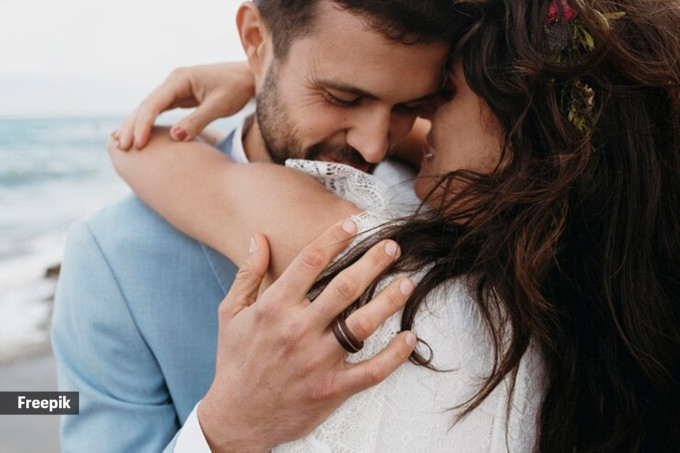Your wedding flowers could be in your backyard
By Amanda McCracken

When Erin Tobiasz, a children’s librarian in Pittsburgh, was planning her September 2022 wedding with Matt Oas, a lawyer, she thought about the goldenrod growing in the fields outside the library where she led story time in the fall.
https://images.indianexpress.com/2020/08/1x1.png“It just looks like Pennsylvania,” said Tobiasz, 37, a youth services manager at C.C. Mellor Memorial Library. She decided to include the yellow flowering plant in her bridal bouquet, along with Jewels of Opar, foraged rose hips, zinnias and Chabaud La France carnations. All were sourced from local flower farmers.
“I had roots in Pennsylvania but my family did not, so it was a neat way to introduce my family to the area that I’ve been living,” said Tobiasz, who has lived in Pennsylvania for 13 years. Every September when she sees goldenrod, she said, she is reminded of her wedding.
Tobiasz and Oas, 38, are among many couples using locally grown flowers for their weddings. Local growers offer brides and grooms a more sustainable option over imported flowers, often without the use of preservatives or harmful pesticides, while also allowing them to personalize their nuptials by marking a season and a location.
“The level of customization that can happen with local flowers is completely different than ordering from, like, Amazon, these big national and international wholesalers,” said Jessica Stewart, a florist and owner of Bramble & Blossom in Pittsburgh, who worked with Tobiasz and Oas.
Most florists requesting, say, peonies from wholesalers will often have to order the same shade and size in bulk. Buying from several small, local farmers offers florists a variety of sizes and shades, creating a more dynamic color palette. “Pinterest culture tells couples that luxury comes from replicating a design from someone else’s wedding, but I think the opposite is true,” Stewart said. “Finding a peculiar flower, what others might call a mutant, enriches the design.”
 Stewart sources heirloom irises from Sol Patch Garden, in nearby Braddock, Pennsylvania, planted by the owner’s grandfather. “I’ll buy them all the week that they pop,” she said. “The specificity of that is like farm-to-table — it’s so unique, and it could literally only be for your wedding.”
Stewart sources heirloom irises from Sol Patch Garden, in nearby Braddock, Pennsylvania, planted by the owner’s grandfather. “I’ll buy them all the week that they pop,” she said. “The specificity of that is like farm-to-table — it’s so unique, and it could literally only be for your wedding.”
 “The level of customization that can happen with local flowers is completely different than ordering from, like, Amazon, these big national and international wholesalers,” said Jessica Stewart, a florist and owner of Bramble & Blossom in Pittsburgh, who worked with Tobiasz and Oas. (Source: Freepik)
“The level of customization that can happen with local flowers is completely different than ordering from, like, Amazon, these big national and international wholesalers,” said Jessica Stewart, a florist and owner of Bramble & Blossom in Pittsburgh, who worked with Tobiasz and Oas. (Source: Freepik)
Jennie Love, owner of Love ‘n Fresh Flowers, an urban flower farm in Philadelphia, offers a variety of plants and flowers including dappled willow, wild columbine and etched salmon peonies. She likens the use of local blooms to “high fashion.”
“The only way you can have that level of customization and tailored elegance is by using the really good stuff,” she said. “And that comes from the local farms.”
Not only do local growers provide access to more distinctive blooms but the flowers are also likely to be more fragrant.
Helen Skiba, who grows more than 80 varieties of flowers at Artemis Flower Farm in Boulder, Colorado, said that with many imported roses, “a lot of those scent genes have been bred out of them, so you lose this whole sensory dimension of an experience.”
Imports still make up about 80% of flower sales in the United States, according to the U.S. Department of Agriculture, but the domestic flower market has been growing. The most recent USDA floriculture survey reported 10,216 producers in 2023, compared with 8,949 in 2022.
And membership in the Slow Flowers network, which represents local flower farmers and others in the industry, has tripled, to 750 from 250, since the group started in 2014, said Debra Prinzing, the network’s founder and author of “The 50-Mile Bouquet: Seasonal, Local and Sustainable Flowers.”
Fifteen years ago, Prinzing observed the slow food movement in the culinary world, which focuses on sourcing sustainably grown local ingredients, and wondered: Why couldn’t there be a slow flower movement? “If you really want to live with the seasons, and people are doing it in their diets, why aren’t we doing it in our flowers?” Prinzing said.
Prinzing attributes the rising interest in local flora partly to social media, where couples and florists have shared photos of romantic bouquets featuring nonconventional flowers. Among them is Lennie Larkin, owner of B-Side Farm in Portland, Oregon. Her Instagram feed features fields of coral charm peonies and bunches of golden celebration roses. Larkin describes her work with couples as an educational sensory-based process. “We’re encouraging them to think back about what flowers might be nostalgic for them,” she said.
Annaliese Danckers, a 29-year-old Montessori teacher in Longmont, Colorado, reached out to Skiba to source and design the florals for her September 2023 wedding.
“Going with a local farmer was a no-brainer for us,” said Danckers, whose bouquet included sunflowers, dahlias and amaranth. “Being able to work one on one, knowing the care that went into growing and arranging every bouquet, and using our purchasing power to make a little difference in how the wedding industry makes money were all part of our choice.”
Disclaimer: The copyright of this article belongs to the original author. Reposting this article is solely for the purpose of information dissemination and does not constitute any investment advice. If there is any infringement, please contact us immediately. We will make corrections or deletions as necessary. Thank you.
